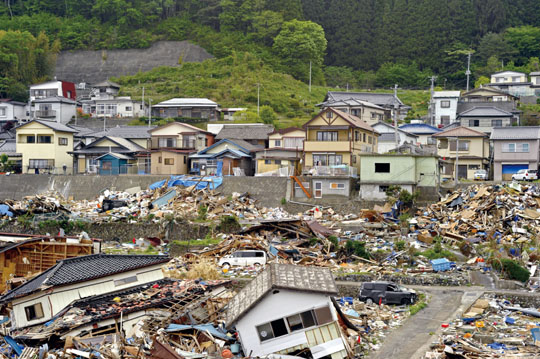When the March 11 tsunami hit the village of Yoshihama in Iwate Prefecture, the water overran a seawall, smashed through a coastal pine forest, poured over a large embankment and then surged up a long, low-lying valley. It was a scenario almost identical to that being played out at dozens of settlements along Japan's northeast coast, except that at Yoshihama, things were different.
Elsewhere, what the tsunami invariably found as it raged inland along coastal valleys like the one at Yoshihama were houses, schools, train stations, shops, businesses and people — many thousands of people. What it found at Yoshihama were rice paddies.
From an adjacent hill, the village residents watched as an 18-meter wave rampaged from the Pacific into the valley below. They watched in awe — both at the force of nature being displayed in front of them, and also at the foresight of their ancestors who, more than a century earlier, had relocated their village center from the valley floor to the safety of the hill where they now stood. More than likely, their ancestors had saved their lives.



